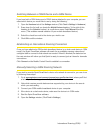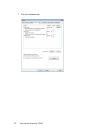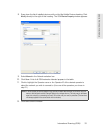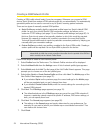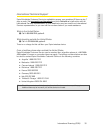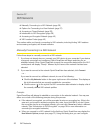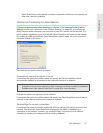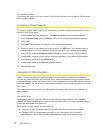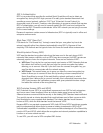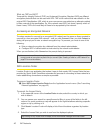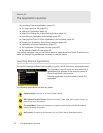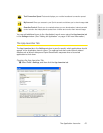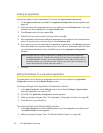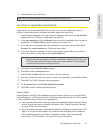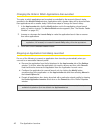
WiFi Networks 39
WiFi Networks
802.1x Authentication
802.1x is a protocol that specifies the method Sprint SmartView will use to obtain an
encryption key during the WiFi login process. It is really just a standard framework that
specifies a second protocol, called an “EAP Type” (Extended Access Protocol), to
accomplish most of its work. Therefore, when attempting to access a network that requires
802.1x Authentication, you will need to correctly specify the EAP used and configure the
options for that EAP. Consult the administrator of the WiFi network you are trying to access
for the correct settings.
Because it requires a certain amount of infrastructure, 802.1x is typically used in office and
enterprise environments.
What Does “PSK” Stand For?
PSK stands for “Pre-Shared Key.” it simply means that your encryption key has to be
entered manually rather than obtained automatically using 802.1x. Because of their
simplicity, PSK methods are the typical choice for home and small office environments.
Wired Equivalent Privacy (WEP)
WEP was the standard encryption technology that was used in the early days of WiFi
networks. More secure methods, such as WPA have since emerged, but WEP remains an
extremely popular choice for encrypted networks. There are two variants of WEP:
● WEP Open: This is by far the most commonly used version of WEP. Networks that use
this variant don’t bother to verify that you have the correct encryption key before
allowing you to connect. After all, if you don't have the connect encryption key, you
won’t be able to communicate with the network anyway.
● WEP Shared: This variant forces you to prove you have the correct encryption key
before it allows you to connect. It does this by sending out some sample text for
Sprint SmartView to encrypt. If the result that the network gets back is what it
expected, then it allows you to connect. Ironically, this is somewhat less secure than
WEP Open because the verification process used gives potential intruders a large
hint about the contents of the encryption key.
WiFi Protected Access (WPA and WPA2)
WiFi Protected Access (WPA) is a significant improvement over WEP for both enterprises
and home users. It was developed when an industry trade group known as the WiFi
Alliance became concerned that the security in the existing WEP Standard was insufficient.
They quickly issued an interim standard that would address most of their concerns while
they developed a more complete final standard. The interim standard would become
known as WPA, while the final standard would be termed WPA2.
Because 802.1x is a required component of WPA, both WPA and WPA2 provide an upgrade
path for enterprises that allows them to preserve existing investments in 802.1x/EAP
Authentication capabilities. In addition, home users can take advantage of a Pre-Shared Key
mode in WPA and WPA2, which allows the encryption and network protection capabilities to
function on a home network as well.
To use WPA, you will need a WPA-compliant WiFi device.



